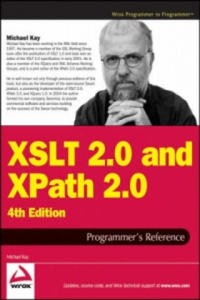libristo structure and function of plasma proteins 1 2269496
- znaleziono 6 produktów w 3 sklepach
Protein Structure And Function
Książki Obcojęzyczne>Angielskie>Mathematics & science>Biology, life sciences>Biochemistry>ProteinsKsiążki Obcojęzyczne>Angielskie>...
0x01329ef100000000
Sklep: Gigant.pl
Molecular mechanisms of insect chemical communication: From pheromone biosynhesis to perception and degradation Uniwersytet Opolski
CHEMIA
Chemical signals govern a large part of insect behavior and physiology. Within a species chemical communication is mediated by pheromones. Insect pheromones are described briefly, with particular emphasis on sex attractants. Identification of pheromones is presented using the example of an unusual, caffeine-like alkaloid, 1,3-dimethyl-2,4-(1H,3H)-quinazo-linedione, the sex pheromone of the pale-brown chafer, Phyllophertha diversa. Biosynthetic pathways are described for pheromones from the best studied insect orders (Lepidoptera, Coleoptera, Diptera and Dictyoptera). The methodology for establishing the biosynthetic routes is presented using unsaturated g -lactones, the sex pheromones of a number of scarab beetles. Evidence is shown that these semiochemicals are biosynthesized from fatty acids by desaturation, hydroxylation, chain shortening and cyclization reactions. The hydroxylation reaction is remarkably stereospecific in two species: the Osaka beetle (Anomala osakana) and the Japanese beetle (Popillia japonica). Molecular mechanisms of pheromone perception are presented, with the emphasis on the perireceptor events, taking place in the sensillar lymph. Pheromone binding proteins (PBPs), transporting the pheromones from the environment to the receptor neurons, are described in detail. Purification, cloning, and ligand binding specificity of two new classes of these proteins identified in scarab beetles are described. Preparation of the recombinant PBP from the silkworm moth, Bombyx mori, expressed in Escherichia coli periplasm, is presented. Structural changes induced by pH change in this protein and the odorant binding protein from P. diversa, and a similar conformational transition in B. mori PBP in the pre-sence of model phospholipid membranes, are described. A novel mechanism of ligand transport through the sensillar lymph and its release upon encountering the surface of olfactory neurons is proposed based on these structural studies. Enzymatic inactivation of pheromones by sensillar enzymes is described. Degradation of g -lactones in several species of scarab beetles is analyzed and antennal esterases metabolizing these compounds are characterized. Substantial substrate specificity for the natural stereoisomer is demonstrated in two cases (Anomala octiescostata and P. japonica). Degradation pathway of 1,3-dimethyl-2,4-(1H,3H)-quinazolinedione is also analyzed. Evidence is presented that this molecule is metabolized by a specific, olfactory cytochrome P450 by N-de-methylation and hydroxylation of the aromatic ring. Potential applications for results of molecular studies of insect chemical communication are discussed. Spis treści: Table of contents List of abbreviations 1. Introduction 2. Insect pheromones 2.1. Structural diversity and species specificity 2.2. Identification of pheromones 3. Pheromone biosynthesis 3.1. Anatomical location of pheromone biosynthesis 3.2. Pheromone biosynthesis in model insect species 3.3. Biosynthesis of y-lactones in scarab beetles 3.4. Hormonal regulation of pheromone biosynthesis 4. Pheromone perception in the olfactory sensillum 4.1. Structure of the olfactory sensillum 4.2. Biochemical events in the olfactory sensillum 4.3. Pheromone binding proteins 4.3.1. Pheromone binding proteins in scarab beetles, P, japonica and A. osakana - the problem of ligand binding specificity 4.3.2. Odorant binding proteins in the pale brown chafer, P. diuersa - the problem of heterogeneity 4.3.3. The function of structural changes in pheromone binding proteins 4.4. Pheromone degrading enzymes and olfactory signal inactivation 4.4.1. Degradation of Y-lactones in scarab beetles 4.4.2. Degradation of the alkaloid pheromone from the pale brown chafer, P. diversa 5. Conclusions and perspective 6. Experimental procedures 6.1. Analysis of pheromones, their biosynthetic intermediates and degradation products by chromatographic methods 6.2. Protein purification and analysis 6.3. Ligand binding and enzymatic reactions with radiochemicals 6.4. Molecular cloning and protein expression 6.5. Spectroscopic analysis of protein structure 7. Literature cited List of figures Summary Streszczenie
Sklep: Księgarnia Techniczna
Zeros in Linear Systems: a Geometric Approach Politechnika Warszawska
MATEMATYKA
Monografia zawiera nowe geometryczne podejście do analizy zer wielowymiarowych układów liniowych standardowych i singularnych. Zaproponowaną charakteryzację zer oparto na informacji zawartej w pierwszym niezerowym parametrze Markova układu. Wprowadzono nową definicję zer inwariantnych rozszerzającą dotychczasowe pojęcie zer Smitha. Spis treści: 1. Introduction 1.1. Smith Zeros 1.2. Scope of the Book 1.3. Glossary of Symbols 2. Zeros and Output-Zeroing Problem 2.1. Definitions of Zeros 2.2. Decoupling Zeros 2.3. Invariant Zeros and Transmission Zeros 2.4. Output-Zeroing Problem 2.5. Relationship between Smith Zeros and Invariant Zeros 2.6. Exercises 3. A General Solution to the Output-Zeroing Problem 3.1. Preliminary Characterization of Invariant Zeros 3.2. Output-Zeroing Inputs 3.3. Exercises 4. The Moore-Penrose Pseudoinverse of the First Nonzero Markov Parameter 4.1. Strictly Proper Systems 4.2. Proper Systems 4.3. Systems with Vector Relative Degree 4.4. Exercises 5. Singular Value Decomposition of the First Nonzero Markov Parameter 5.1. Strictly Proper Systems 5.2. A Procedure for Computing Invariant Zeros of Strictly Proper Systems 5.3. Proper Systems 5.4 A Procedure for Computing Invariant Zeros of Proper Systems 5.5. Exercises 6. Geometric Characterization of Zeros 6.1. Reachable/Observable System Structure 6.2. Systems with Zero Transfer-Function Matrix 6.3. The First Nonzero Markov Parameter of Full Column Rank 6.4. Invariant Subspaces 6.5. SVD and Output-Zeroing Problem 6.6. Proper Systems 6.7. Exercises 7. Singular Systems 7.1. Definitions of Zeros 7.2. Invariant Zeros 7.3. Output Decoupling Zeros 7.4. Input Decoupling Zeros A. Appendix A A.1. Controllability and Observability A.2. Canonical Decomposition of the State Space B. Appendix B B.1. The Moore-Penrose Pseudoinverse of a Matrix B.2. Singular Value Decomposition of a Matrix B.3. Endomorphims of a Linear Space over C C. Appendix C C.1. Polynomial and Rational Matrices References Index
Sklep: Księgarnia Techniczna
Quantum Field Theory Dover Publications Inc.
Książki / Literatura obcojęzyczna
PrefaceGeneral References1. Classical Theory 1.1 Principle of Least Action 1.1.1 Classical Motion 1.1.2 Electromagnetic Field as an Infinite Dynamical System 1.1.3 Electromagnetic Interaction of a Point Particle 1.2 Symmetries and Conservation Laws 1.2.1 Fundamental Invariants 1.2.2 Energy Momentum Tensor 1.2.3 Internal Symmetries 1.3 Propagation and Radiation 1.3.1 Green Functions 1.3.2 Radiation2. The Dirac Equation 2.1 Toward a Relativistic Wave Equation 2.1.1 Quantum Mechanics and Relativity 2.1.2 The Dirac Equation 2.1.3 Relativistic Covariance 2.2 Physical Content 2.2.1 Plane Wave Solutions and Projectors 2.2.2 Wave Packets 2.2.3 Electromagnetic Coupling 2.2.4 Foldy-Wouthuysen Transformation 2.3 Hydrogen-like Atoms 2.3.1 Nonrelativistic versus Relativistic Spectrum 2.3.2 Dirac Theory 2.4 Hole Theory and Charge Conjugation 2.4.1 Reinterpretation of Negative Energy Solutions 2.4.2 Charge Conjugation 2.4.3 Zero-Mass Particles 2.5 Dirac Propagator 2.5.1 Free Propagator 2.5.2 Propagation in an Arbitrary External Electromagnetic Field 2.5.3 Application to the Coulomb Scattering 2.5.4 Fock-Schwinger Proper Time Method3. Quantization--Free Fields 3.1 Canonical Quantization 3.1.1 General Formulation 3.1.2 Scalar Field 3.1.3 Charged Scalar Field 3.1.4 Time-Ordered Product 3.1.5 Thermodynamic Equilibrium 3.2 Quantized Radiation Field 3.2.1 Indefinite Metric 3.2.2 Propagator 3.2.3 Massive Vector Field 3.2.4 Vacuum Fluctuations 3.3 Dirac Field and Exclusion Principle 3.3.1 Anticommutators 3.3.2 Fock Space for Fermions 3.3.3 Relation between Spin and Statistics--Propagator 3.4 Discrete Symmetries 3.4.1 Parity 3.4.2 Charge Conjugation 3.4.3 Time Reversal 3.4.4 Summary4. Interaction with an External Field 4.1 Quantized Electromagnetic Field Interacting with a Classical Source 4.1.1 Emission Probabilities 4.1.2 Emitted Energy and the Infrared Catastrophe 4.1.3 Induced Absorption and Emission 4.1.4 S Matrix and Evolution Operator 4.2 Wick's Theorem 4.2.1 Bose Fields 4.2.2 Fermi Fields 4.2.3 General Case 4.3 Quantized Dirac Field Interacting with a Classical Potential 4.3.1 General Formalism 4.3.2 Emission Rate to Lowest Order 4.3.3 Pair Creation in a Constant Uniform Electric Field 4.3.4 The Euler-Heisenberg Effective Lagrangian5. Elementary Processes 5.1 S Matrix and Asymptotic Theory 5.1.1 Cross Sections 5.1.2 Asymptotic Theory 5.1.3 Reduction Formulas 5.1.4 Generating Functional 5.1.5 Connected Parts 5.1.6 Fermions 5.1.7 Photons 5.2 Applications 5.2.1 Compton Effect 5.2.2 Pair Annihilation 5.2.3 Positronium Lifetime 5.2.4 Bremsstrahlung 5.3 Unitarity and Causality 5.3.1 Unitarity and Partial Wave Decomposition 5.3.2 Causality and Analyticity 5.3.3 The Jost-Lehmann-Dyson Representation 5.3.4 Forward Dispersion Relations 5.3.5 Momentum Transfer Analyticity6. Perturbation Theory 6.1 Interaction Representation and Feynman Rules 6.1.1 Self-Interacting Scalar Field 6.1.2 Feynman Rules for Spinor Electrodynamics 6.1.3 Electron-Electron and Electron-Positron Scattering 6.1.4 Scalar Electrodynamics 6.2 Diagrammatics 6.2.1 Loopwise Expansion 6.2.2 Truncated and Proper Diagrams 6.2.3 Parametric Representation 6.2.4 Euclidean Green Functions 6.3 Analyticity Properties 6.3.1 Landau Equations 6.3.2 Real Singularities 6.3.3 Real Singularities of Simple Diagrams 6.3.4 Physical-Region Singularities. Cutkosky Rules7. Radiative Corrections 7.1 One-Loop Renormalization 7.1.1 Vacuum Polarization 7.1.2 Electron Propagator 7.1.3 Vertex Function 7.1.4 Summary 7.2 Radiative Corrections to the Interaction with an External Field 7.2.1 Effective Interaction and Anomalous Magnetic Moment 7.2.2 Radiative Corrections to Coulomb Scattering 7.2.3 Soft Bremsstrahlung 7.2.4 Finite Inclusive Cross Section 7.3 New Effects 7.3.1 Photon-Photon Scattering 7.3.2 Lamb Shift 7.3.3 Van der Waals Forces at Large Distances8. Renormalization 8.1 Regularization and Power Counting 8.1.1 Introduction 8.1.2 Regularization 8.1.3 Power Counting 8.1.4 Convergence Theorem 8.2 Renormalization 8.2.1 Normalization Conditions and Structure of the Counterterms 8.2.2 Bogoliubov's Recursion Formula 8.2.3 Zimmermann's Explicit Solution 8.2.4 Renormalization in Parametric Space 8.2.5 Finite Renormalizations 8.2.6 Composite Operators 8.3 Zero-Mass Limit, Asymptotic Behavior, and Weinberg's Theorem 8.3.1 Massless Theories 8.3.2 Ultraviolet Behavior and Weinberg's Theorem 8.4 The Case of Quantum Electrodynamics 8.4.1 Formal Derivation of the Ward-Takahashi Identities 8.4.2 Pauli-Villars Regularization to All Orders 8.4.3 Renormalization 8.4.4 Two-Loop Vacuum Polarization9. Functional Methods 9.1 Path Integrals 9.1.1 The Role of the Classical Action in Quantum Mechanics 9.1.2 Trajectories in the Bargmann-Fock Space 9.1.3 Fermion Systems 9.2 Relativistic Formulation 9.2.1 S Matrix and Green Functions in Terms of Path Integrals 9.2.2 Effective Action and Steepest-Descent Method 9.3 Constrained Systems 9.3.1 General Discussion 9.3.2 The Electromagnetic Field as an Example 9.4 Large Orders in Perturbation Theory 9.4.1 Introduction 9.4.2 Anharmonic Oscillator10. Integral Equations and Bound-State Problems 10.1 The Dyson-Schwinger Equations 10.1.1 Field Equations 10.1.2 Renormalization 10.2 Relativistic Bound States 10.2.1 Homogeneous Bethe-Salpeter Equation 10.2.2 The Wick Rotation 10.2.3 Scalar Massless Exchange in the Ladder Approximation&n 12.3 The Effective Action at the One-Loop Order 12.3.1 General Form 12.3.2 Two-Point Function 12.3.3 Other Functions 12.3.4 One-Loop Renormalization 12.4 Renormalization 12.4.1 Slavnov-Taylor Identities 12.4.2 Identities for Proper Functions 12.4.3 Recursive Construction of the Counterterms 12.4.4 Gauge Dependence of Green Functions 12.4.5 Anomalies 12.5 Massive Gauge Fields 12.5.1 Historical Background 12.5.2 Massive Gauge Theory 12.5.3 Spontaneous Symmetry Breaking 12.5.4 Renormalization of Spontaneously Broken Gauge 12.5.5 Gauge Independence and Unitarity of the S Matrix 12.6 The Weinberg-Salam Model 12.6.1 The Model for Leptons 12.6.2 Electron-Neutrino Cross Sections 12.6.3 Higher-Order Corrections 12.6.4 Incorporation of Hadrons13. Asymptotic Behavior 13.1 Effective Charge in Electrodynamics 13.1.1 The Gell-Mann and Low Function 13.1.2 The Callan-Symanzik Equation 13.2 Broken Scale Invariance 13.2.1 Scale and Conformal Invariance 13.2.2 Modified Ward Identities 13.2.3 Callan-Symanzik Coefficients to Lowest Order 13.3 Scale Invariance Recovered 13.3.1 Coupling Constant Flow 13.3.2 Asymptotic Freedom 13.3.3 Mass Corrections 13.4 Deep Inelastic Lepton-Hadron Scattering and Electron-Positron Annihilation into Hadrons 13.4.1 Electroproduction 13.4.2 Light-Cone Dynamics 13.4.3 Electron-Positron Annihilation 13.5 Operator Product Expansions 13.5.1 Short-Distance Expansion 13.5.2 Dominant and Subdominant Operators, Operator Mixing, and Conservation Laws 13.5.3 Light-Cone ExpansionAppendixA-1 MetricA-2 Dirac Matrices and SpinorsA-3 Normalization of States, S Matrix, Unitarity, and Cross SectionsA-4 Feynman RulesIndex
Sklep: Libristo.pl
XSLT 2.0 and XPath 2.0 Programmer's Reference 4e John Wiley & Sons Inc
Książki / Literatura obcojęzyczna
This book is primarily a practical reference book for professional XSLT developers. It assumes no previous knowledge of the language, and many developers have used it as their first introduction to XSLT; however, it is not structured as a tutorial, and there are other books on XSLT that provide a gentler approach for beginners. The book does assume a basic knowledge of XML, HTML, and the architecture of the Web, and it is written for experienced programmers. There's no assumption that you know any particular language such as Java or Visual Basic, just that you recognize the concepts that all programming languages have in common. The book is suitable both for XSLT 1.0 users upgrading to XSLT 2.0, and for newcomers to XSLT. The book is also equally suitable whether you work in the Java or .NET world. As befits a reference book, a key aim is that the coverage should be comprehensive and authoritative. It is designed to give you all the details, not just an overview of the 20 percent of the language that most people use 80 percent of the time.It's designed so that you will keep coming back to the book whenever you encounter new and challenging programming tasks, not as a book that you skim quickly and then leave on the shelf. If you like detail, you will enjoy this book; if not, you probably won't. But as well as giving the detail, this book aims to explain the concepts, in some depth. It's therefore a book for people who not only want to use the language but who also want to understand it at a deep level. The book aims to tell you everything you need to know about the XSLT 2.0 language. It gives equal weight to the things that are new in XSLT 2.0 and the things that were already present in version 1.0. The book is about the language, not about specific products. However, there are appendices about Saxon (the author's own implementation of XSLT 2.0), about the Altova XSLT 2.0 implementation, and about the Java and Microsoft APIs for controlling XSLT transformations, which will no doubt be upgraded to handle XSLT 2.0 as well as 1.0. A third XSLT 2.0 processor, Gestalt, was released shortly before the book went to press, too late to describe it in any detail. But the experience of XSLT 1.0 is that there has been a very high level of interoperability between different XSLT processors, and if you can use one of them, then you can use them all.In the previous edition we split XSLT 2.0 and XPath 2.0 into separate volumes. The idea was that some readers might be interested in XPath alone. However, many bought the XSLT 2.0 book without its XPath companion and were left confused as a result; so this time, the material is back together. The XPath reference information is in self-contained chapters, so it should still be accessible when you use XPath in contexts other than XSLT. The book does not cover XSL Formatting Objects, a big subject in its own right. Nor does it cover XML Schemas in any detail. If you want to use these important technologies in conjunction with XSLT, there are other books that do them justice. This book contains twenty chapters and eight appendixes (the last of which is a glossary) organized into four parts. The following section outlines what you can find in each part, chapter, and appendix. Part I: Foundations: The first part of the book covers essential concepts. You should read these before you start coding.If you ignore this advice, as most people do, then you read them when you get to that trough of despair when you find it impossible to make the language do anything but the most trivial tasks. XSLT is different from other languages, and to make it work for you, you need to understand how it was designed to be used. Chapter 1: XSLT in Context: This chapter explains how XSLT fits into the big picture: how the language came into being and how it sits alongside other technologies. It also has a few simple coding examples to keep you alert. Chapter 2: The XSLT Processing Model: This is about the architecture of an XSLT processor: the inputs, the outputs, and the data model. Understanding the data model is perhaps the most important thing that distinguishes an XSLT expert from an amateur; it may seem like information that you can't use immediately, but it's knowledge that will stop you making a lot of stupid mistakes. Chapter 3: Stylesheet Structure: XSLT development is about writing stylesheets, and this chapter takes a bird's eye view of what stylesheets look like.It explains the key concepts of rule-based programming using templates, and explains how to undertake programming-in-the-large by structuring your application using modules and pipelines. Chapter 4: Stylesheets and Schemas: A key innovation in XSLT 2.0 is that stylesheets can take advantage of knowledge about the structure of your input and output documents, provided in the form of an XML Schema. This chapter provides a quick overview of XML Schema to describe its impact on XSLT development. Not everyone uses schemas, and you can skip this chapter if you fall into that category. Chapter 5: The Type System: XPath 2.0 and XSLT 2.0 offer strong typing as an alternative to the weak typing approach of the 1.0 languages. This means that you can declare the types of your variables, functions, and parameters, and use this information to get early warning of programming errors. This chapter explains the data types available and the mechanisms for creating user-defined types. Part II: XSLT and XPath Reference: This section of the book contains reference material, organized in the hope that you can easily find what you need when you need it.It's not designed for sequential reading, though you might well want to leaf through the pages to discover what's there. Chapter 6: XSLT Elements: This monster chapter lists all the XSLT elements you can use in a stylesheet, in alphabetical order, giving detailed rules for the syntax and semantics of each element, advice on usage, and examples. This is probably the part of the book you will use most frequently as you become an expert XSLT user. It's a "no stone unturned" approach, based on the belief that as a professional developer you need to know what happens when the going gets tough, not just when the wind is in your direction. Chapter 7: XPath Fundamentals: This chapter explains the basics of XPath: the low-level constructs such as literals, variables, and function calls. It also explains the context rules, which describe how the evaluation of XPath expressions depends on the XSLT processing context in which they appear. Chapter 8: XPath: Operators on Items: XPath offers the usual range of operators for performing arithmetic, boolean comparison, and the like.However, these don't always behave exactly as you would expect, so it's worth reading this chapter to see what's available and how it differs from the last language that you used. Chapter 9: XPath: Path Expressions: Path expressions are what make XPath special; they enable you to navigate around the structure of an XML document. This chapter explains the syntax of path expressions, the 13 axes that you can use to locate the nodes that you need, and associated operators such as union, intersection, and difference. Chapter 10: XPath: Sequence Expressions: Unlike XPath 1.0, in version 2.0 all values are sequences (singletons are just a special case). Some of the most important operators in XPath 2.0 are those that manipulate sequences, notably the "for" expression, which translates one sequence into another by applying a mapping. Chapter 11: XPath: Type Expressions: The type system was explained in Chapter 5; this chapter explains the operations that you can use to take advantage of types. This includes the "cast" operation which is used to convert values from one type to another.A big part of this chapter is devoted to the detailed rules for how these conversions are done.Chapter 12: XSLT Patterns: This chapter returns from XPath to a subject that's specific to XSLT. Patterns are used to define template rules, the essence of XSLT's rule-based programming approach. The reason for explaining them now is that the syntax and semantics of patterns depends strongly on the corresponding rules for XPath expressions. Chapter 13: The Function Library: XPath 2.0 includes a library of functions that can be called from any XPath expression; XSLT 2.0 extends this with some additional functions that are available only when XPath is used within XSLT. The library has grown immensely since XPath 1.0. This chapter provides a single alphabetical reference for all these functions. Chapter 14: Regular Expressions: Processing of text is an area where XSLT 2.0 and XPath 2.0 are much more powerful than version 1.0, and this is largely through the use of constructs that exploit regular expressions. If you're familiar with regexes from languages such as Perl, this chapter tells you how XPath regular expressions differ. If you're new to the subject, it explains it from first principles.Chapter 15: Serialization: Serialization in XSLT means the ability to generate a textual XML document from the tree structure that's manipulated by a stylesheet. This isn't part of XSLT processing proper, so (following W3C's lead) it's separated it into its own chapter. You can control serialization from the stylesheet using an declaration, but many products also allow you to control it directly via an API. Part III: Exploitation: The final section of the book is advice and guidance on how to take advantage of XSLT to write real applications. It's intended to make you not just a competent XSLT coder, but a competent designer too. The best way of learning is by studying the work of others, so the emphasis here is on practical case studies. Chapter 16: Extensibility: This chapter describes the "hooks" provided in the XSLT specification to allow vendors and users to plug in extra functionality. The way this works will vary from one implementation to another, so we can't cover all possibilities, but one important aspect that the chapter does cover is how to use such extensions and still keep your code portable.Chapter 17: Stylesheet Design Patterns: This chapter explores a number of design and coding patterns for XSLT programming, starting with the simplest "fill-in-the-blanks" stylesheet, and extending to the full use of recursive programming in the functional programming style, which is needed to tackle problems of any computational complexity. This provides an opportunity to explain the thinking behind functional programming and the change in mindset needed to take full advantage of this style of development. Chapter 18: Case Study: XMLSpec: XSLT is often used for rendering documents, so where better to look for a case study than the stylesheets used by the W3C to render the XML and XSLT specifications, and others in the same family, for display on the web? The resulting stylesheets are typical of those you will find in any publishing organization that uses XML to develop a series of documents with a compatible look-and-feel. Chapter 19: Case Study: A Family Tree: Displaying a family tree is another typical XSLT application.This example with semi-structured data-a mixture of fairly complex data and narrative text-that can be presented in many different ways for different audiences. It also shows how to tackle another typical XSLT problem, conversion of the data into XML from a legacy text-based format. As it happens, this uses nearly all the important new XSLT 2.0 features in one short stylesheet. But another aim of this chapter is to show a collection of stylesheets doing different jobs as part of a complete application. Chapter 20: Case Study: Knight's Tour: Finding a route around a chessboard where a knight visits every square without ever retracing its steps might sound a fairly esoteric application for XSLT, but it's a good way of showing how even the most complex of algorithms are within the capabilities of the language. You may not need to tackle this particular problem, but if you want to construct an SVG diagram showing progress against your project plan, then the problems won't be that dissimilar. Part IV: Appendices: A ppendix A: XPath 2.0 Syntax Summary: Collects the XPath grammar rules and operator precedences into one place for ease of reference.Appendix B: Error Codes: A list of all the error codes defined in the XSLT and XPath language specifications, with brief explanations to help you understand what's gone wrong. Appendix C: Backward Compatibility: The list of things you need to look out for when converting applications from XSLT 1.0. Appendix D: Microsoft XSLT Processors: Although the two Microsoft XSLT processors don't yet support XSLT 2.0, we thought many readers would find it useful to have a quick summary here of the main objects and methods used in their APIs. Appendix E: JAXP: the Java API for XML Processing: JAXP is an interface rather than a product. Again, it doesn't have explicit support yet for XSLT 2.0, but Java programmers will often be using it in XSLT 2.0 projects, so the book includes an overview of the classes and methods available. Appendix F: Saxon: At the time of writing Saxon (developed by the author of this book) provides the most comprehensive implementation of XSLT 2.0 and XPath 2.0, so its interfaces and extensions are covered in some detail. Appendix G: Altova: Altova, the developers of XML Spy, have an XSLT 2.0 processor that can be used either as part of the development environment or as a freestanding component.This appendix gives details of its interfaces. Appendix H: Glossary Note: CD-ROM/DVD and other supplementary materials are not included as part of eBook file.
Sklep: Libristo.pl
Modern Genome Annotation Springer Verlag GmbH
Książki / Literatura obcojęzyczna
An accurate description of current scientific developments in the field of bioinformatics and computational implementation is presented by research of the BioSapiens Network of Excellence. Bioinformatics is essential for annotating the structure and function of genes, proteins and the analysis of complete genomes and to molecular biology and biochemistry. §Included is an overview of bioinformatics, the full spectrum of genome annotation approaches including; genome analysis and gene prediction, gene regulation analysis and expression, genome variation and QTL analysis, large scale protein annotation of function and structure, annotation and prediction of protein interactions, and the organization and annotation of molecular networks and biochemical pathways. Also covered is a technical framework to organize and represent genome data using the DAS technology and work in the annotation of two large genomic sets: HIV/HCV viral genomes and splicing alternatives potentially encoded in 1% of the human genome.
Sklep: Libristo.pl
Sklepy zlokalizowane w miastach: Warszawa, Kraków, Łódź, Wrocław, Poznań, Gdańsk, Szczecin, Bydgoszcz, Lublin, Katowice
Szukaj w sklepach lub całym serwisie
1. Sklepy z libristo pl structure and function of plasma proteins 1 2269496
2. Szukaj na wszystkich stronach serwisu
t1=0.026, t2=0, t3=0, t4=0.013, t=0.026






